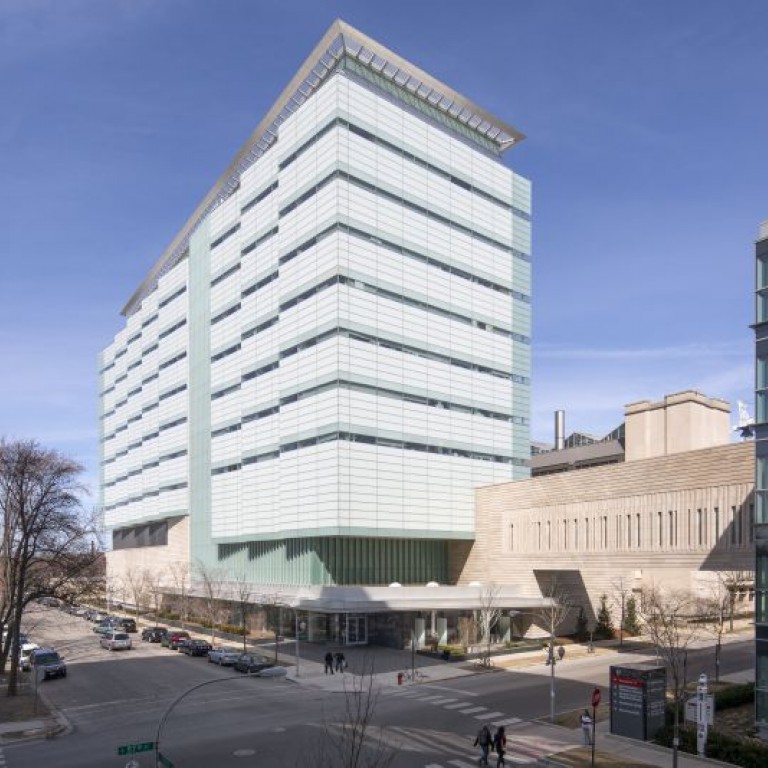About one-third of the 3.5 million breast cancer survivors in the U.S. have undergone a mastectomy to remove one or both breasts. Up to 77% of these women report sexual dysfunction following surgery, yet Stacy Tessler Lindau, MD, says that few of them are given the opportunity to process the long-term effects of the procedure beyond the immediate goal of removing a tumor.
“For most women, it's less than a few weeks between the moment a doctor says, ‘You have breast cancer’ and having a mastectomy,” she said. “Even if their breasts are cosmetically restored, women still have many of the same experiences as a person who loses a limb, like feeling it’s no longer part of their body, total loss of sensation and even pain. For many people, it’s not just a physical loss, but also a psychological and even existential loss.”

Lindau, who is the Catherine Lindsay Dobson Professor of Obstetrics and Gynecology at the University of Chicago, has spent her career studying how to preserve sexual function in women after treatment for cancer. Now, she is working to heal both the physical and psychological losses through a groundbreaking collaboration with neuroscientists and biomedical engineers to build an implantable device that will restore sensation to the breast after mastectomy and reconstructive surgery.
The Bionic Breast Project, which was launched with exploratory funding from the UChicago Comprehensive Cancer Center and the National Cancer Institute, just received $3.99M from the National Institutes of Health (NIH) to begin early clinical trials that will test components of the device in patients. The project incorporates neuroscience research about how the brain processes information from the nervous system about touch, and development of implantable medical devices for stimulating the nerves to create the sense of touch, as well as sensors to respond to touch in the reconstructed breast.
Recreating natural sensations
The device is based on research by Sliman Bensmaia, PhD, a pioneering neuroscientist at UChicago who died unexpectedly in August 2023, shortly after he and Lindau received word of the NIH award. The two began collaborating on the idea in 2016, after Lindau heard about Bensmaia’s vision to develop prosthetic limbs that can restore a realistic sense of touch to amputees and paralyzed patients. His lab published a series of groundbreaking studies that provided blueprints for incorporating realistic sensory feedback into prosthetic limbs. They also worked with partners at the University of Pittsburgh and Case Western Reserve University to help build robotic prosthetic arms that patients can both move with their thoughts and receive realistic sensations of touch as the hand moves and grasps objects.
These futuristic feats are accomplished by connecting devices either directly to the brain or the remaining nerves in an amputated limb. These devices send and receive electrical signals that are translated into movements and sensory feedback from the prosthetic. The goal for such devices is to create prosthetic limbs that are fully “embodied,” meaning they feel like a natural part of the body and produce the same sensations as a natural limb. The Bionic Breast device will use a similar approach by tapping into branches of the intercostal nerves where they enter the breast area.
While Bensmaia’s death was an enormous loss, Lindau and her team are building on his legacy with other collaborators. Case Western Reserve University co-investigator Emily Graczyk, PhD and biomedical engineer Dustin Tyler, PhD, who have decades of collective experience implementing neuroprosthetic devices for both upper and lower limbs in humans, will be developing the electronic components that connect to the nervous system through an electrode called a C-FINE that wraps around the intercostal nerves.
Charles Greenspon, PhD, a postdoctoral researcher from Bensmaia’s lab, will continue work to understand how people discriminate between different sensations of touch to develop the corresponding electrical stimuli to send from the sensor to the nervous system. Rochelle Ackerley, PhD, a neuroscientist from the French National Centre for Scientific Research (CNRS), is collaborating with the team with the support of a joint research partnership between UChicago and CNRS. Ackerley and her students will provide more expertise on how receptors in different types of skin, from the breast and torso to the nipple and areola, respond to touch and how different stimuli correspond to pleasurable sensations.
“Sliman was the ‘Bionic’ and I was the ‘Breast’ part of this project,” Lindau said. “Even if it won’t be the same without him, the team we have will still be able to create beauty and impact together.”
Flexible sensors built for the human body
Supported by the new NIH funding, Lindau will work with breast cancer surgeons at UChicago Medicine, including Summer Hanson, MD, PhD, Nora Jaskowiak, MD, and Sarah Shubeck, MD. The team will recruit patients who are about to undergo a mastectomy to test the device, and then surgeons will implant the C-FINE device at the same time as the mastectomy and first stage of breast reconstruction. The device will then be connected to the intercostal nerve branches, with thin, soft, flexible electrical leads that come through the skin under the arm.
During the remaining time before they have the second stage reconstructive surgery, the patients will visit a lab where the team will test the device by delivering electrical impulses through the leads. The patients will report how different sensations feel, their intensity, whether they feel natural or painful, and so on, so the researchers can tune the device accordingly. Finally, when the patient returns for the second stage of reconstructive surgery, the device will be removed—no extra surgical procedures will be required beyond the mastectomy and reconstruction.



